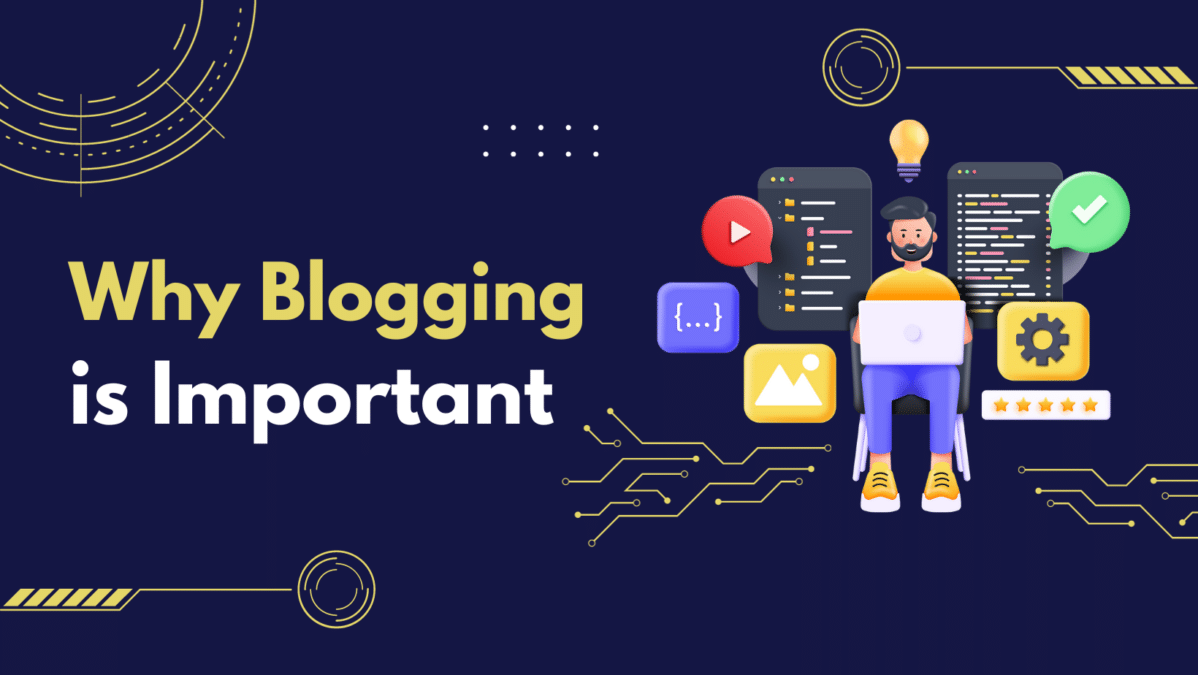
Inbound Marketing Vs. Outbound Marketing: Which One Is Better?
August 4, 2021
3 Useful Ways To Use Social Media Marketing Effectively
August 4, 2021Why Blogging is Important
Discover why blogging is important and how to start a blog for your website and use it to boost your SEO
When ranking websites, search engines like Google tend to favor ones with well-written, frequently updated content; a blog helps you meet this requirement. You can add a new blog entry every day, week, or month to let your audience and search engines know that you’re on top of things! Blogs are also a great place to use niche keywords that may be harder to add to the main pages of your site but can help you connect to specific segments of your market and drive more traffic.
Here’s how to start a blog for your website and use it to boost your SEO
Research Other Blogs
Do some market research to see what your top competitors and people in your field are writing about. Search for them by typing your keywords into Google along with the word “blog”. For example, if you’re a personal stylist, you could search for “fashion blog.” You can also take a look at your competitors’ social media and check what types of blog posts get the most shares, likes, and comments.
Set Goals & Define Topics
Define the purpose of your blog, whether it’s to promote your products or services, establish your expertise, or simply to connect better to your target audience. Determining your goals will help you decide what blog topics will help you achieve them.
Choose topics based on your keywords. Try to include a keyword in the title of every blog post. You may want to choose topics that will push your biggest keywords, or try to target a more niche audience by focusing on keywords that you weren’t able to use in the core content on your site. (e.g. new sandal trends, eco-friendly hair products).
Another strategy is to write a series of “How To” posts. Think about what questions your potential customers might be asking and come up with topics that answer them. Each article should be centered around teaching readers something specific (e.g. “How to get your wardrobe ready for the summer,” “How to cut your morning routine down to 15 minutes,” or “How to shop for designer clothes on a budget”).
Create a Content Plan
Write out a list of topics, outlines, and publishing dates (aim for weekly, bi-weekly or monthly—the more frequent, the better). Remember that not all posts need to have a ton of words—even if it’s just a video or photo, it still counts. Plus, varying the style of your posts can help you attract different segments of your target market.
Doing the prep work before you start has three benefits: 1) You’ll create content on a regular basis; 2) You won’t need to come up with topics each time; 3) Your messaging will stay focused and consistent.
Top Blog Writing Tips
1. Write Engaging Content
While your posts should be SEO-friendly, they also need to be enjoyable. Keep readers engaged by writing about interesting, on-topic issues. Search engines look at how long people spend on your posts, and longer Time on Page stats means bonus points with Google!
2. Make Posts Readable
Grab people’s attention with headings, sub-headings, bullet points, lists, and short paragraphs. These will make your posts super-readable and easy to scan—especially for readers on mobile devices. Break up your content and try to avoid chunks of text that are more than 3-4 sentences long.
3. Target Niche Keywords
Pick specific keywords for each blog post and sprinkle them in your content, as well as in the post’s unique meta tags and excerpts. Add the keywords in naturally and avoid overstuffing them.
4. Use Tags and Categories
Tags and categories help organize your posts so readers can easily browse your content and find the articles that interest them the most. Use tags to group posts according to specific terms (micro-level) and use categories to divide your blog into broader terms (macro-level).
- Tag examples: summer styles, hair routines, budget shopping
- Category examples: inspiration, beauty, outfits
5. Add Links
Include lots of hyperlinks to other pages and posts on your website. These links keep readers on your website longer and give them opportunities to gain knowledge about the specific topics that interest them. Plus, they help Google easily understand your content.
Quick SEO Wins for Your Blog
- Aim for at least 300-700 words per post. Once a month, write one that’s 1000+ words.
- Add a comments section and social share buttons to your blog.
- Write keyword-rich alt text for all your images.
- Finish every post with a call to action that encourages readers to do something, whether it’s read another blog post, add a comment or email you via your contact page.
- Write an SEO-friendly URL. It’s one of the first things that Google looks at, so your URL should clearly describe your post and include at least one keyword. (e.g. www.stylesbysarah.com/2017-fashion).
Always Be Posting
And now, for an unconventional piece of advice: Your blog doesn’t need to be perfect.
While you want your posts to be proofread and spellchecked before you publish them, don’t let an obsession with details prevent you from getting them out the door. This is the biggest blocker that stops people from blogging on a regular basis. Publishing three 95% ready posts is more valuable than not publishing anything. Keep this in mind as you write your blog.




